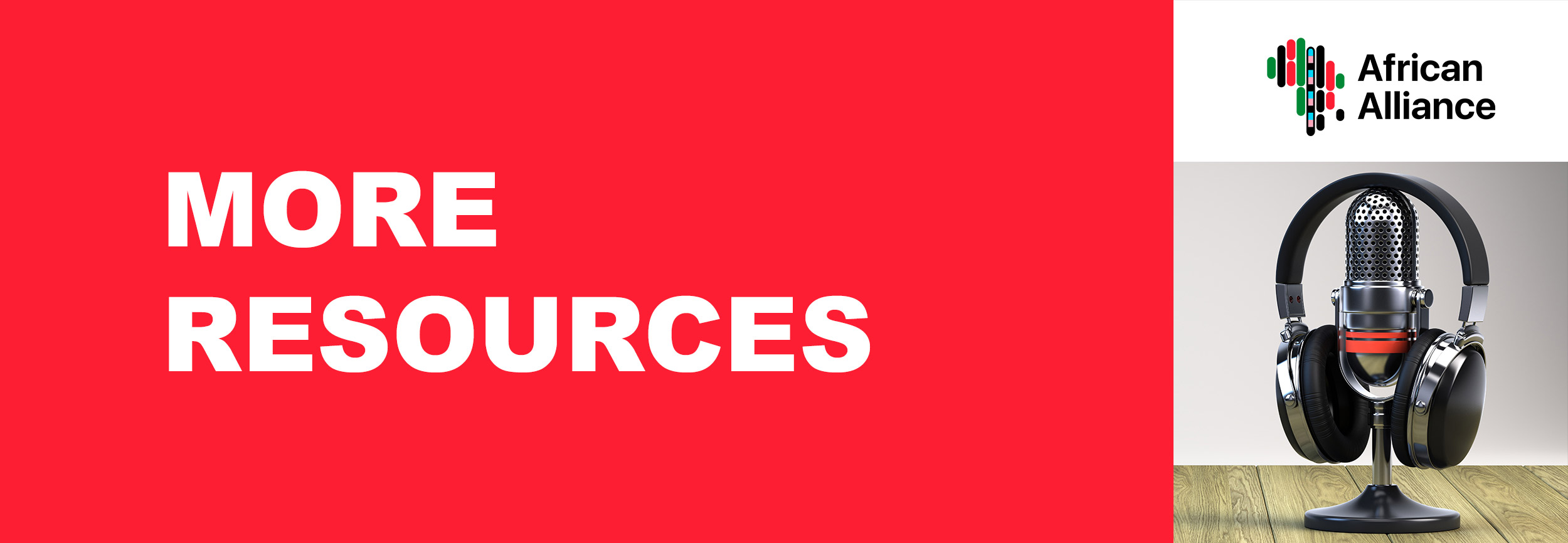
Professor Graeme Meintjes, Infectious Diseases Physician and the Second Chair and Deputy Head of the Department of Medicine at the University of Cape Town. Dr Amy Ward is the Site Director of the UCT Khayelitsha Clinical Research Site (CRS)
The hypothesis is that there is not an increased risk of this factor. But it’s only through research and doing it with people having full knowledge and having heard that the HIV prevention strategies in place that we will be able to address that question.
Moderator: Tian Johnson
Complied by Vivienne Naidoo
Queries?: info@africanalliance.org.za
Webinar Recordings & Supplementary Materials:
https://www.nature.com/articles/d43747-020-00963-y
https://labusinessjournal.com/news/2021/jan/25/immunitybio-announces-clinical-trial-covid-19/
https://www.samrc.ac.za/research/ethics/guideline-documents
WHO
Professor Graeme Meintjes (MBChB, FRCP(Glasg), FCP(SA), DipHIVMan, MPH, PhD) is an Infectious Diseases Physician and the Second Chair and Deputy Head of the Department of Medicine at the University of Cape Town. He also holds the SARChI Chair of Poverty-related Infections. Over the last year, he and colleagues at Groote Schuur Hospital have managed patients with Covid-19 admitted to the wards at the hospital.
Dr Amy Ward (MBBCh, DipHIVMan) is the Site Director of the UCT Khayelitsha CRS and a qualified medical doctor who has worked in the community of Khayelitsha for eight years. She is an experienced clinical trialist focusing on HIV and TB and more recently COVID-19. She is currently leading the Khayelitsha CRS team as PI on 2 COVID-19 vaccine trials and sits as National PI for one of the world’s largest COVID-19 natural history observational cohort studies.
QUESTION AND ANSWERS
*This section contains a transcribed account of the Question-and-Answer Session*
What is the difference between the US phase one trial and the one you’re attempting to conduct here? And could you specifically comment on rates of circumcision between the two groups and HIV prevalence between the group that was part of phase one in the US and the potential group located in South Africa?
It’s not the first time I’ve been asked; it’s an important question. Why is it also being done here if a phase one trial is being done in the US? Firstly, to say that, just to answer the one question about the participant numbers, the US trial was initially designed exactly the same way to enrol 35 participants, they enrolled 20. They then put in an amendment to not enrol an additional 15, but rather, to start with the oral and the sublingual, so they are very quickly going over to that. It’s quite likely that we might do the same by enrolling the first two cohorts here and then get an amendment to look at the sublingual and oral capsule as an alternative strategy. One of the reasons you can see that there are various arms in the US is that one can test, give a subcutaneous, do oral boosts, try an oral and then an oral boost, etc. And, you know, subcutaneous and sublingual boost. And what we’re planning is to do the same foundational study here with the two sublingual that has been done in the US. Provided we show similar responses to do different arms here compared to the US. The totality of the data will then tell us what to take forward to phase two and three, and we are hoping that we will be able to take forward a strategy, for instance, a single subcutaneous injection with two oral tablet boosts.
Still, we want to compare multiple arms between the US and South Africa of different strategies and find an effective one. It will also be one that is most easily to roll out. So I hope that addresses the numbers and how these two trials are going to work in parallel. In terms of why South Africa, you know, why are we also doing it in South Africa from the start, we’re aware that T cell responses can have a genetic influence. Therefore, we wanted to ensure that the T cell responses will be seen in the US study; we will see some in our population. There are reasons we wouldn’t necessarily expect to see the same responses in a US study in a South African study. There are also differences in co-infections in the microbiome that could lead to different responses in different settings. When we got involved, we were keen to partner and start the development process in South Africa, parallel with the US and start with that foundational phase one studies. But as I said, what we are looking at is doing the first 20 participants. They would be done differently in the US and South Africa. So I hope that addresses that question.
Could you speak a bit more around the circumcision status of the two groups?
I’m not aware of the data for the US on circumcision. And I think that the population that would have been enrolled in the US would have been a low-risk population for HIV. So I don’t think that the US population, either this phase one study or any further development in the US, will answer the question that we need to answer in South Africa about HIV risk. I think it will only be answered in South Africa. I think the risk of HIV is going to be very low in the US. The other thing that one must remember those HIV studies referred to by the STEP and Phambilli those studies went out of their way to enrol people at high risk of HIV. Because that was what they were testing, do you prevent people at higher risk of HIV from infection? This is going to be a far broader study. As Amy said, we are, trying to preferentially, at least in the early phase, avoid putting people at any potential risk, even though we think it’s lowered, and therefore avoiding participants with HIV. It will lead to a lot of challenges as we go forward in the development process because at the same time as wanting to avoid any risk, we also want to answer the question, is there any increased risk? The hypothesis is that there is not an increased risk of this factor. But it’s only through research and doing it with people having full knowledge and having heard that the HIV prevention strategies in place that we will be able to address that question.
Could you give us a flavour and a feel of what some of SAHPRA’s concerns were and how you responded to those?
I think when the article was written regarding Ad5 and that subsequent discussion, I would add the caveat that they weren’t discussing the issue of modified Ad5 vector, they were just saying that we shouldn’t be using that same Ad5 vector. The question of whether modified Ad5 vectors are going to adjust that risk is obviously still something that needs to be debated. Certainly, there should be an ongoing discussion about that. If you look at the references to the Chinese vaccine that was being developed with Ad5, that was the concern. There is a different discussion when saying you’ve got a substantially modified Ad5, that doesn’t induce those same immune responses. Is it then the same issues when you’re dealing with that? Is it? Is it the exact same vector or modified to reduce the immune responses to that change the question. I think it’s still a point for discussion, but I don’t think it’s exactly the same discussion that’s been had. We got very robust responses back from SAHPRA and our ethics committee at UCT asking us to justify using the Ad5 vectors and provide the data we’ve provided here today. We were very upfront about these issues and how we felt that the design of the vaccine, the trials’ design, and informed consent were mitigating those factors, in response to that with some of the measures, such as doing HIV risk screening before enrollment was introduced in response to the study’s ethics review.
Ntando asks, do we have any non-human data on hAd5 and the risk of HIV acquisition?
No, we don’t have that data. Those experiments haven’t been done.
Where do you think more can be done to ensure that communities are engaged and satisfied? So beyond the traditional CAB structures and those kinds of platforms? Could you describe that broader society and community engagement?
We can start off with just describing, which is clearly the most important level: the community’s engagement in Khayelitsha.
With every study, we, first of all, go to our Community Advisory Group, and present them the study. And really, we went out of our way to make it explicit as to why the engagement around this issue should be of high priority. And we’ve also engaged with TAC Khayelitsha, to say that there are particular interests around HIV in the study and that we would like to engage on and we’re waiting to hear back from them, but they did sound keen to engage with us. And then, again, we’re here with you guys. We’re keen to openly engage around this issue with the community at large and activists.
Just add, today is an example of our enthusiasm and great desire to engage in these discussions. We would be happy to engage with any other organizations that want to have discussions around this. It’s the phase one trial; it’s 20 participants, all the measures in place. As we go forward, having further engagements about the development process will be critical. There will be other issues that arise, using it, potentially in a larger population, how we address that. Then informed consent, are you address that in the design. How are you monitoring for that? As I’ve said, the hypothesis that we’re going into this trial is that this vaccine will provide additional protection against SARS-CoV2 where some deficiencies might occur with the existing vaccines. Simultaneously, because this Ad5 vector has been significantly modified from the previous ones, we won’t see the increased risk of HIV; obviously, that’s a hypothesis. We research to assess both efficacy and safety in that way. And we need to at the same time, protect research participants as much as we can and make them as informed as possible, of potential risks, even if we think that those risks are reduced. We are very keen to get a lot of input from broad representatives of the community and other organizations in the health space to give us their thoughts and feedback about how we negotiate those issues of balancing up. How do you take something that based on the science that exists looks to have efficacy benefits? There might be safety concerns; those might be reduced? How do we assess that? How do we protect participants? How do we explain this in the informed consent process? And in engagement with participants throughout the trial?
What communications message is a way to essentially prove for lack of a better word, that this vector has been modified and is different from the old one?
It’s a matter of translating the science in a way that it can be broadly communicated. I think illustrations work very powerfully. To show that the genetic segments that were deleted in the previous vector, the additional genetic segments, how that changes the virus’s conformation, the proteins that are expressed, that Western blot that I showed you. It does mean that somebody has engaged with science. We need to try and make those messages as clear as possible to people in the community that this does not induce the same immune responses and how those logical connections work. The reason why there was an increased HIV risk, which was in men in the earlier studies, was based on other studies taught to be to the Ad5 immune responses. Those were thought the driving of Ad5 immune responses is what was thought to increase the HIV risk. This vector has had, genetic segments are taken out of it; therefore, expresses fewer proteins. And there is demonstrable evidence that therefore there is less Ad5 immunity. There’s a lot of steps, and we need to put those in a clearly presented manner. This is a hypothesis based on science because the only way we can ultimately prove this is by doing the research.
Ad5 also appears in some of the other COVID vaccines is that accurate, that we currently have on the radar?
There is a company in China developing an Ad5, but that’s not a modified one. Perhaps the issues are greater with respect to that. The Ad5 viral platforms, in general, are being used quite broadly. Ad26 is being studied with Janssen. Those weren’t studied in an HIV context, so we don’t have any information on HIV risk in those but whether this is exclusively Ad5 or whether this is a broad adenoviral issue is something that also needs to be looked at.
The Sputnik vaccine uses the Ad5 and then the Ad26 for the boosts because they are still experiencing that Ad5 immune response. So they have to change the vector for the boost. And that’s, that’s not the second-generation vector. That’s the other Ad5 that I’m aware of. Thanks.
What is your final message to us for this discussion around how we can support and engage with this very important trial?
I just wanted to say that so as a clinician and as a tribalist, HIV is my passion COVID happened, but HIV is my passion. And I want to engage on this issue specifically, and I’m very open to discussions as we advance. And on the other hand, I’m very excited about this COVID vaccine. We had been working on this since about May last year. And it is one of the most exciting things that I as a clinician have ever come across. And I want to balance those two, and I feel like we have been balancing those two, and I am going to appreciate your support from the activists in helping us keep that balanced. And my doors always open if you guys want to come and chat.
I would just go back to the point that I made earlier because, as researchers, we’ve often faced this issue where a novel intervention has potential benefits and potential harms. And we need to look at all of the signs that exist to the point that we’re at currently, weigh those up and decide whether the potential benefits are great, and the potential harms are reduced and mitigated as much as possible. In our view, having looked at all of that data very carefully is that there are many potential benefits from this vaccine, as I’ve highlighted in my talk. The changes to the vaccine are very likely to reduce the risk of Ad5 immunity and therefore, the risk of HIV. But it’s only by taking this forward and responsibly studying this, engaging with community engaging with participants being very open about this issue, that we will get those answers that it’s a benefit, and adds a significant weapon and armour material against COVID without causing increased risk. And to echo what Amy said, we’re very keen to make this not just a once of engagement but to hear the voice of everybody on this call, everybody from community organizations, to listen to your input and help translate that into the messaging that we give to our communities as well as to our participants. Thanks very much to Tian for the opportunity.

